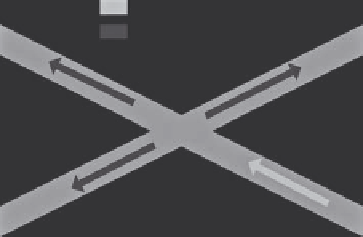Information Technology Reference
In-Depth Information
map, each road is assigned a road ID, a road segment is assigned a segment
ID, and each cell is assigned a cell ID. Then, a vehicle can easily find out its
current road ID, segment ID, and cell ID according to is current position
obtained by the GPS receiver. With cell segmentation, only cell heads are
involved in packet relay. Other cell members are not involved in packet
relay, as shown in Figure 14.12. The packets used for collecting real-time
traffic information usually contain some time fields to record the occurring
time of different events. Compared to other wireless networks, it is easy to
implement synchronization in VANET since all vehicles are automatically
synchronized by the GPS system.
To find the quickest path for a guided vehicle, the guided vehicle will issue
a route query packet. The query packet is a unicast packet. It is transmitted
from the origin to the destination along the shortest path using multi-hop
relay. After the query packet arrives at the destination cell, the destination
cell head issues a route reply packet to the guided vehicle using flooding. By
flooding we mean that the route reply packet will be duplicated at every road
intersection, as shown in Figure 14.13. During the flooding process of the
Cell-1
Cell-2
Cell-3
Cell-4
Cell-5
Figure 14.12
Cell-based data aggregation and packet relay.
Route reply packet
Duplicate copies
Figure 14.13
Flooding of route reply packet.













































